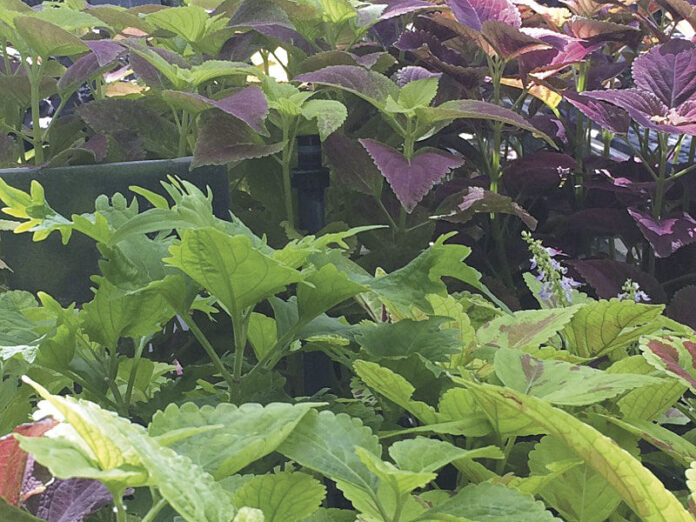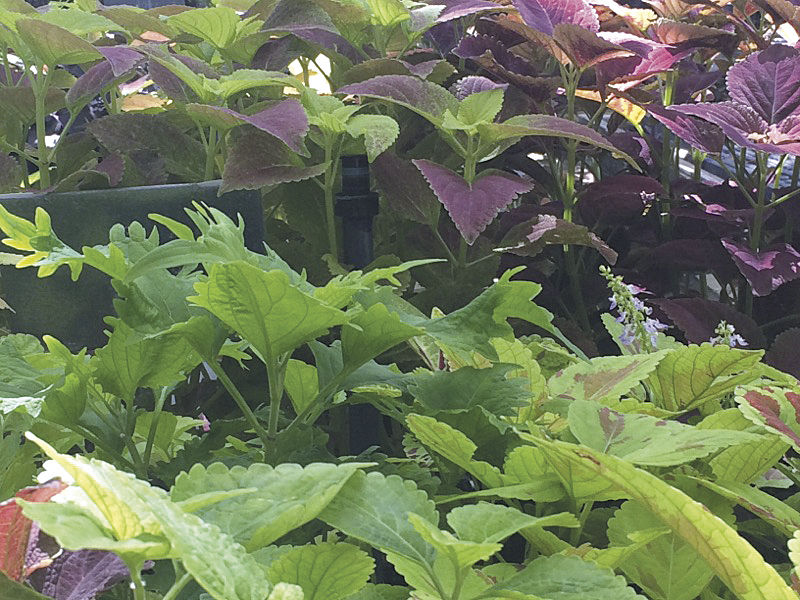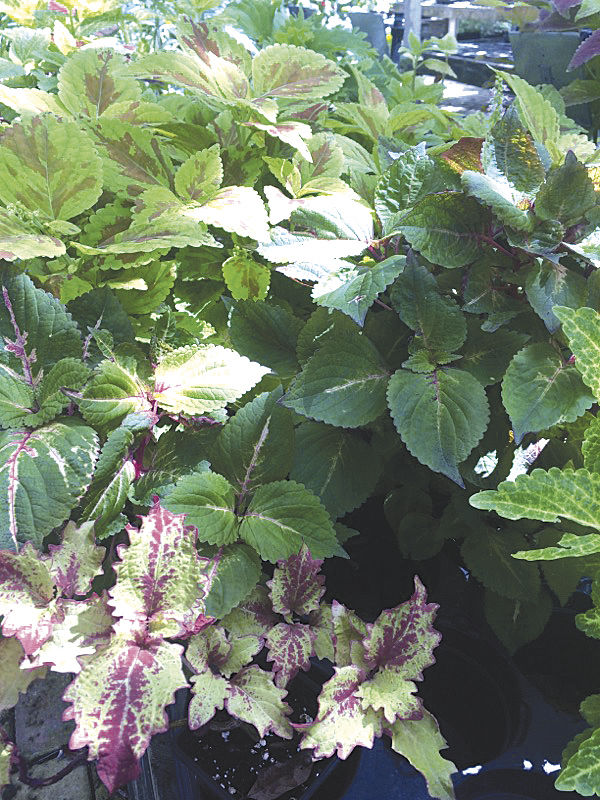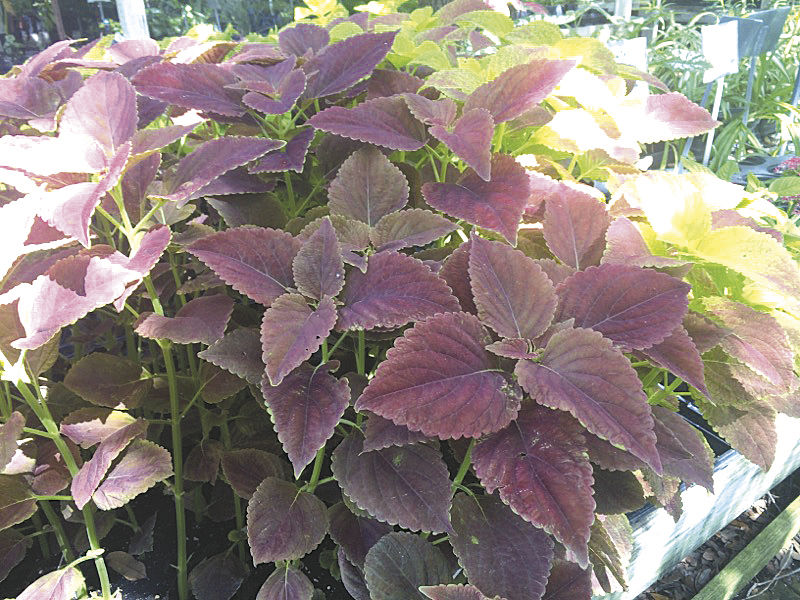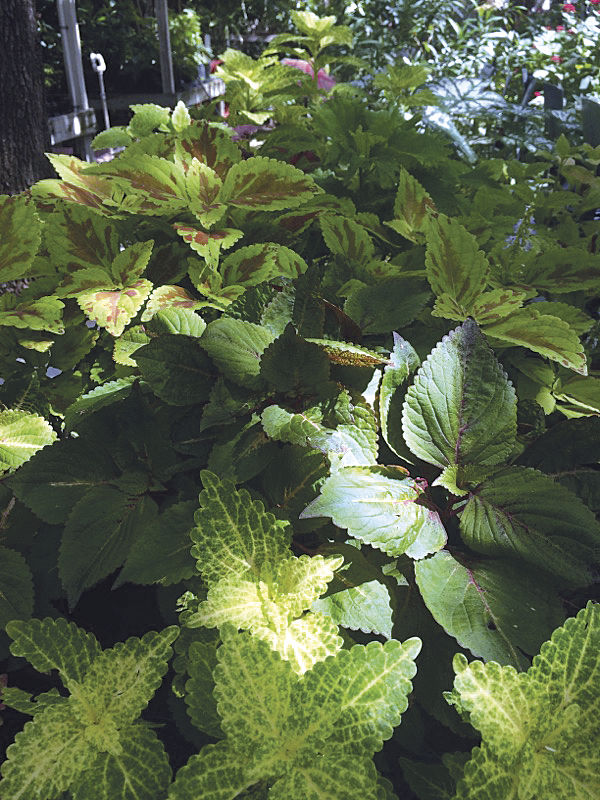BY LORI MURRAY
I’ve read several articles recently on using foliage plants instead of flowering annuals, so when the topic appeared on Pinterest I took it as a sign to write about what I’ve been seeing. The most frequently featured foliage plant in these various writings is coleus. Writing in Fine Gardening, Ray Rogers notes that they offer a “stupefying number of possibilities.” In another issue, the essay, “Sizing Up Coleus,” asks, “What’s not to like about a genus that produces colors from gentle butter yellow to shocking magenta, with leaves that range in shape from simple ovals to frilly triangles – especially when coleus plants are so easy to grow that each pot should bear the slogan, ’Just add water.’” They have been in and out of favor over the past couple centuries, but are popular again today due to some of the features breeders have worked to create – better sun tolerance, delayed flowering, more prolific branching, and special growth habits such as compact and trailing. The Gardener’s Supply article on how to grow coleus gives helpful guidelines on how to choose and where to plant them: The term “sun coleus” refers to selections that tolerate more sun. The varieties with dark leaves tolerate more sun while the lighter varieties need more shade to avoid leaf scorch. Morning sun and dappled afternoon shade tends to maintain consistent foliage coloration. Too little light will encourage a weak-stemmed, less vigorous plant without the best color. It also has a marginal note citing varieties and series that are recommended for both sun and part-sun.
Though coleus are tender tropicals usually grown as annuals because they are only hardy in zone 11, they will do well here – especially when we have a very mild winter. They can be grown in pots or in beds and can form trailing masses or bushy mounds in a landscape. Coleus are easy to grow from cuttings. They will grow in medium sun or shade though they do need sun if you want vivid rather than soft color. It is very very important to note that they are NOT happy in overly dry conditions. In fact, if you plant them in a shady but dry bed they will wither and droop. And there is the caveat that “Some can take quite a bit of sun as long as they are not allowed to dry out.” (Remember too that overly damp soils can cause leaf droop and disease, so choose your location and wetness level accordingly.) Pinching stem tips is highly recommended to make the plants bushier and there is a link to a video demonstrating the procedure in the “4 Ways design coleus” article (Fine Gardening issue 126) noted in Sources below.
Coleus are very easy to grow and propagate. Cuttings root so easily they can even be started in a glass of water, and they can also be propagated by seed in about 8-10 weeks. They grow rapidly and usually perform best in areas with partial shade. They can be planted together as bedding plants or tucked into baskets and containers. For some eye-popping container ideas, go to the Fine Gardening Photo/Illustrations in 4-ways-design-coleus where the varieties are featured in glorious color and every plant is identified by name. “Sizing Up Coleus” in the sources below (also beautifully illustrated) provides lists and descriptions of coleus by type and size to help you select what you need for your own uses.
Whether you’ve known them as painted nettle or poor man’s croton, whether you admired them in Granny’s garden or never saw one in your life, you will want to explore this selection of plants that will brighten your landscape and bring you lots of options for creativity and pleasure.
SOURCES:
http://gardeners.com/how-to/grow-coleus/8734.html
www.finegardening.com/sizing-coleus
http://gardeningknowhow.com/ornamental/foriage/coleus
www.finegardening.com/4-ways-design-coleus

